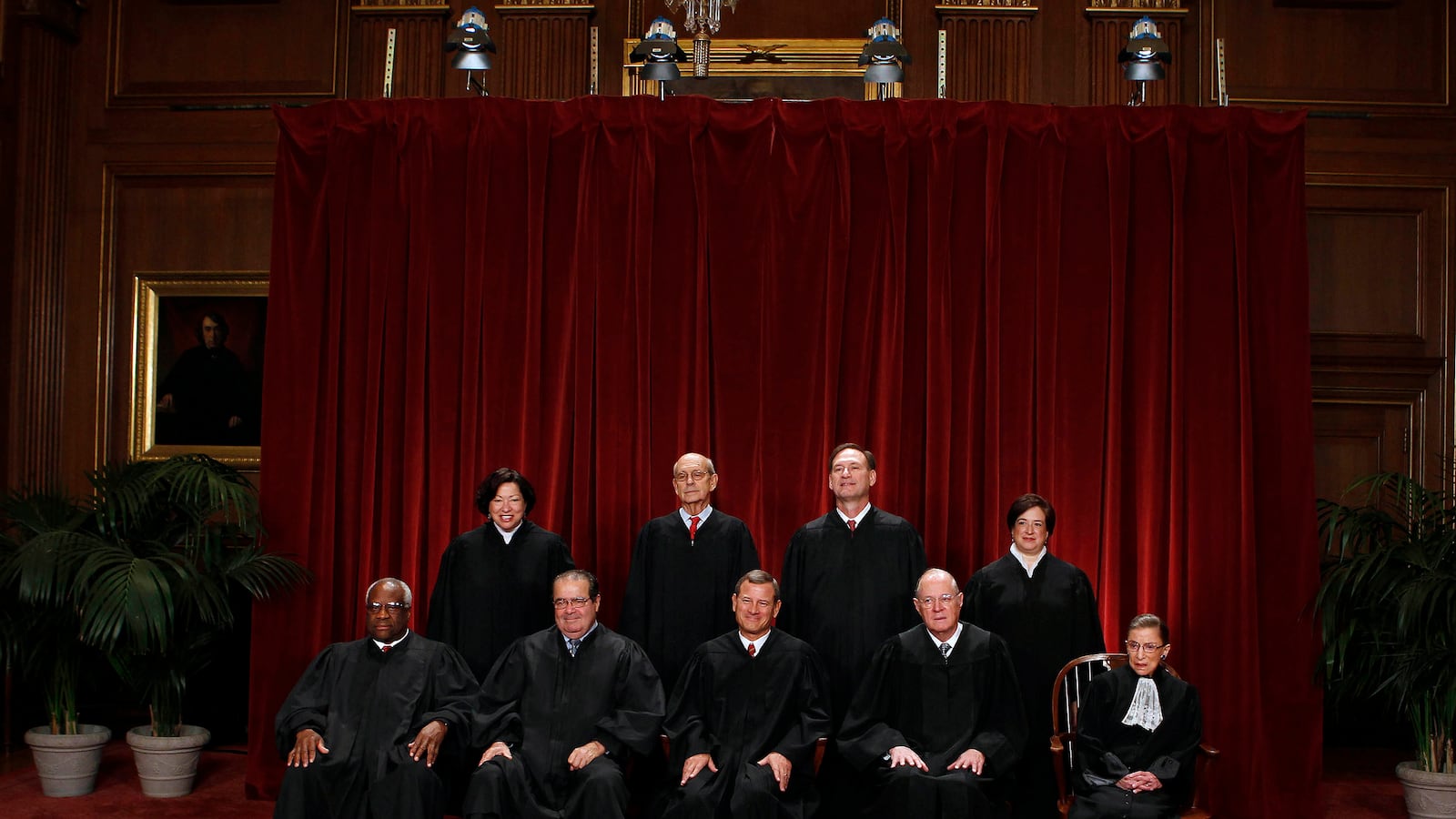When the United States Supreme Court begins its 2016-17 Term in October, the biggest story will not involve a blockbuster case but the still empty seat created by Justice Antonin Scalia’s death last February. Senate Republicans have so far stuck to their pledge that the next president will replace Scalia, and thus have refused to give President Obama’s nominee, Merrick Garland, a hearing. Scalia’s vacancy leaves the court with four justices nominated by Republican presidents and four by Democratic presidents, and the most liberal Republican (Anthony Kennedy) is by most measures more conservative than the most conservative Democrat (Stephen Breyer).
Most legal pundits and academic court watchers are not happy with this equilibrium. All summer long, Dahlia Lithwick of Slate has bemoaned the eight-member court and the lack of news reporting on the missing ninth justice. She suggests that the impasse may lead to a “constitutional crisis.”
On Labor Day, analyst Ken Jost posted the first of what will surely be many other op-eds and blog posts on the new term lamenting the existence of only eight justices. He called the court “dysfunctional” as it “hobbles” toward the new term with the justices putting off the argument of cases most likely to produce 4-4 ties. Garrett Epps, writing in The Atlantic, said that the court is operating “at a reduced level…like a cat in a box who is both alive and dead.”
Even Justice Sonia Sotomayor has gotten in to the act, saying recently that given the deadlocked court, it had to decide a few cases last year “very, very, very narrowly,” and she quipped that “it doesn’t take a genius to figure out why.”
The conventional wisdom is that an eight-person evenly divided Supreme Court is bad for our country. As I wrote last spring, however, there are many advantages to such a court, and we might all be better off if both political parties in the Senate made a commitment to keep this balance permanent (the Constitution mandates no particular number of justices). Even if I am wrong, however, the arguments supporting my position shed light on how the Supreme Court normally operates.
With four conservatives and four liberals divided along party lines, the justices will have to try harder to reach consensus and will likely decide far more cases, to use Justice Sotomayor’s word, “narrowly.” Those are both beneficial, not negative, side effects of an evenly-divided Supreme Court. The court sets an excellent example for the rest of government and the American people when the justices work hard to reach results both sides can live with (or at least can vote for), especially in our most controversial and important cases.
When the court does divide 4-4 because there is simply no compromise available, the lower court decision is affirmed as if the justices had not taken up the case at all. There has been much hand wringing about the four cases last term where this occurred (in addition to at least two other cases where the justices’ final decisions were so narrow that they amounted to pretty much the same thing as a 4-4 tie). For example, Jost argues that “no one on either side of the cases, nor court watchers in general, was satisfied with the tie votes. As football coaches have remarked in a different context, a tie is like kissing your sister.”
The reality, however, is that the sky did not fall because the court failed to resolve these six cases even though among them were the controversial anti-contraception case brought by opponents of Obamacare, the dispute over the president’s immigration plan, and the free-speech case involving state laws allowing the imposition of union fees on government workers who don’t join public sector unions.
With the justices deadlocked, the issues raised do not go undecided but are resolved by one or more of the 12 United States Courts of Appeals who will have the final say on the questions. There are hundreds of judges on these appeals courts who have been through the normal confirmation process and are as a group far more diverse geographically, politically, and educationally than the justices who sit on the Supreme Court. As Justice Sotomayor said recently, the Supreme Court is “never going to be a melting pot reflective of this country.” Leaving the issues to these well-qualified judges is much more akin to kissing your girlfriend than your sister.
The most common concern about an evenly divided Supreme Court is that there are cases where national uniformity is required, and all Americans, regardless of political affiliation, will be hurt unless the court, or at least a majority of the court, speaks with one voice. This need might exist with respect to cases involving federal statutes like the labor or anti-trust laws where a national rule is needed for people and businesses to plan their transactions.
But this fear is vastly overstated. The Supreme Court decides only about 75 cases a year, amounting to fewer than 1 percent of all federal cases. We don’t worry about uniformity in the 99 percent of cases the court never hears.
In addition, of the cases the court does hear, only about 20 percent are decided by 5-4 votes. Most of those, while important, do not raise uniformity issues. Moreover, if a national rule is urgently needed for economic or other reasons, the justices will in all likelihood recognize that need and act accordingly, especially if an evenly divided court were to be a permanent aspect of our legal system.
In contrast to the possible (and mostly hypothetical) uniformity costs, there is one overwhelmingly positive byproduct of an evenly divided Supreme Court. There have been eras in American history when a court dominated by five or more liberals or five or more conservatives has been able to efficiently impose its personal and political agendas on the American people. Between 1900 and 1936, for example, a conservative and out-of-touch court consistently overturned progressive legislation dealing with workers’ rights and safety, including a federal law on child labor. The liberal Warren Court of the 1960s and the early Burger Court of the early 1970s created new constitutional rights that many people opposed. And more recently the Rehnquist and Roberts Courts have made it much harder for plaintiffs to successfully litigate habeas corpus, class-action, and civil-rights cases.
Regardless of where one stands on these controversial issues, if we are going to delegate them to a small governmental body composed of nine elite layers, we should insist on better checks and balances to make it just a little more difficult for that body to impose its will. The Senate adopting a bipartisan norm that the court has to be evenly divided among liberals and conservatives might be a great place to start.






